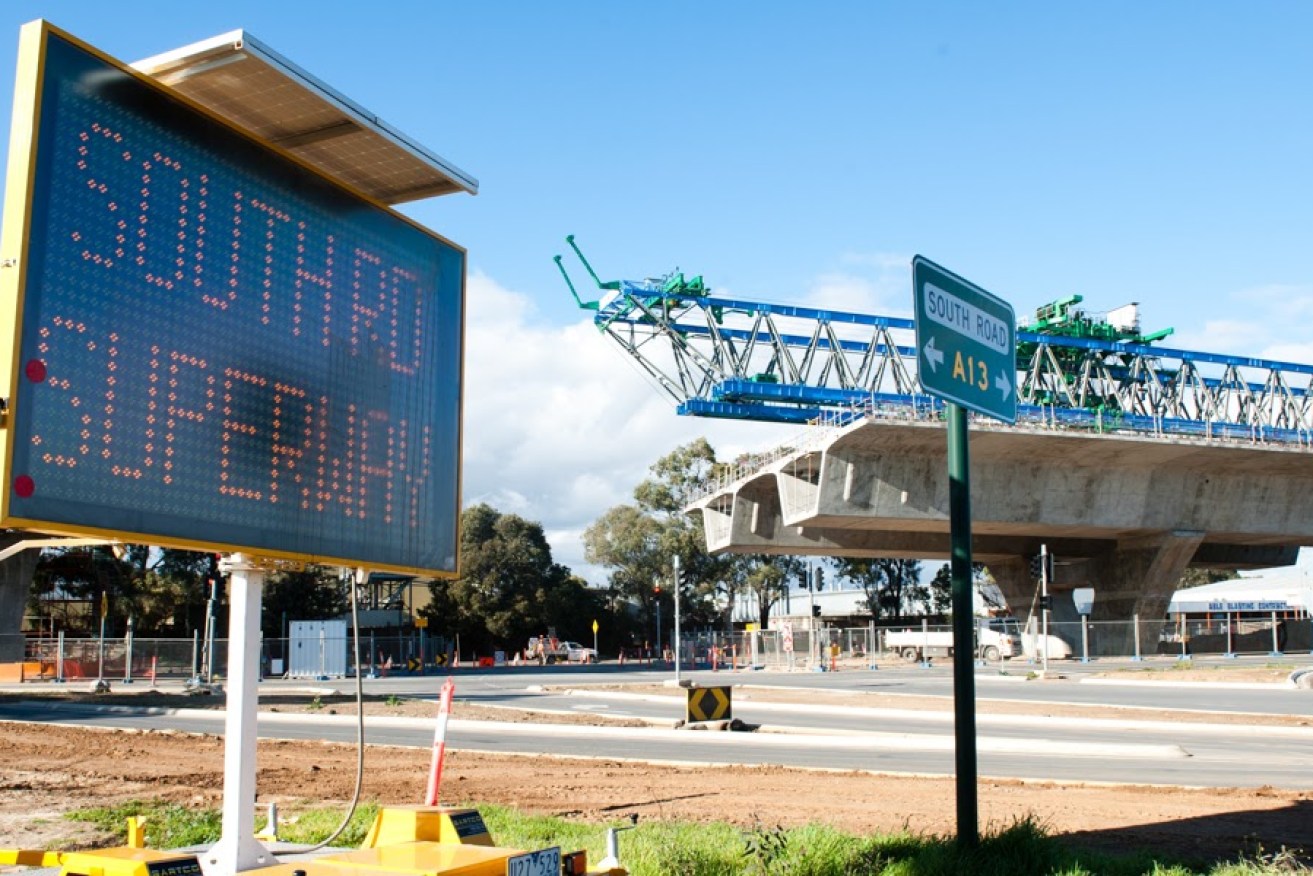Parliament asked to examine Superway construction
A parliamentary committee will be asked to re-examine the $842 million South Road Superway project following allegations of questionable construction practises revealed by InDaily yesterday.


The Public Works Committee will demand answers after allegations of questionable construction practises on the Superway.
Steel fixers who worked on the project told InDaily hundreds of shear ties, designed to prevent the elevated multi-lane road from collapsing during an earthquake, were not installed intact in at least four of the Y-shaped concrete piers holding it above the ground.
They also claim tonnes worth of steel reinforcement on the project was heat-bent, using oxy-acetylene torches, at temperatures that may have fundamentally weakened the structural integrity of the bars.
The roads project was the most expensive in the history of South Australia.
Opposition Transport spokesperson Vickie Chapman told InDaily the Opposition would today send a formal request to the chair of parliament public works committee, Labor’s Annabel Digance, asking that the construction of the roadway be added to the agenda of its next meeting, and that representatives of the Department of Planning, Transport and Infrastructure be called on to respond to the allegations.
Chapman said the committee should examine “whether this structure is safe and fit for purpose”.
Chapman told ABC 891 radio this morning that South Australia’s work health and safety agency, Safework SA, needed to have a role in any investigation.
But Safework SA executive director Marie Boland told InDaily in a statement this afternoon that “SafeWork SA worked with [federal workplace regulator] Comcare to monitor work health and safety issues and dealt with safety complaints at the workplace as they arose”.
Transport and Infrastructure Minister Stephen Mullighan told the ABC 891 he had asked his department for more information on the build after reading InDaily’s investigation.
“I’ve asked my department for some information or a response to what’s been raised in the InDaily article,” he said.
“They tell me that with these major infrastructure projects that are delivered, we make sure that we have an independent engineering expert to certify not just the design of the project but also each stage of the construction of the project.
“Yes, they told me that on some occasions – not every occasion, but on some occasions – there were changes to the design for how the steel super structure, or how the steel reinforcement was to be constructed.
“[But] they are comfortable that the structure is safe.
“It meets the design standards and it meets and exceeds the minimum design criteria that these sort of structures need to when they’re built.”
One of the steel fixers quoted in yesterday’s article claimed some of construction practises he and fellow workers undertook “didn’t really meet the design standard, but it was still signed off”.
“It was always passed.”
However, Mullighan said this morning that each of the changes to the design “were independently examined and certified as well as … inspected after they’d been constructed to make sure they were appropriate before the concrete was poured onto them”.
“I don’t think there was a downgrading of the safety standards.
“I think what’s occurred is that each time they’ve constructed the steel reinforcement and the cages they’ve been inspected to make sure that they are appropriate, that they are safe, and that they meet and exceed the minimum safety standards and design criteria.
“The contractor takes an inspection of the steel, and also the department’s separate expert engineering advisor inspects each of those steel structures before the concrete is poured onto them or into them.”
Mullighan said he was surprised by the timing of the workers’ allegations.
“If these were very significant concerns that these individuals had, I’m surprised that they’re surfacing two years after this project has been commissioned, and not either during the process or when the project was handed over to the department,” he said.
However, the workers claimed that they had relayed their concerns about the construction practises to contractor John Holland and subcontractor Bears Concreting during the build, and were told to “just do it”.
John Holland declined to comment on the allegations and Bears Concreting did not respond to InDaily‘s request for comment.
The State Government has not responded in detail to the workers’ claims that steel reinforcement bars were bent at temperatures beyond that which risks the bars’ structural integrity.
Chapman said this morning that “it’s concerning that [in] yesterday’s article there wasn’t an answer, there’s still not an answer”.
“The Minister’s being very careful about what he’s saying on this,” she told ABC radio.
The State Government has also not responded to detailed questions from InDaily concerning workers’ allegations shear ties – otherwise known as earthquake-proof hooks or earthquake strengthening bars – were not intact when they were installed in the concrete piers elevating the roadway.
It has also not responded to claims that a frayed soft sling, holding tonnes of steel reinforcement together, was used on site.
Soft slings were all but black-listed in the South Australian construction industry after the death of a worker during the construction of the state’s desalination plant in 2010.
Construction worker Brett Fritsch, 35, died when a 1.8-tonne steel beam fell onto him while being moved in a soft sling.
Photo: Nat Rogers/InDaily




